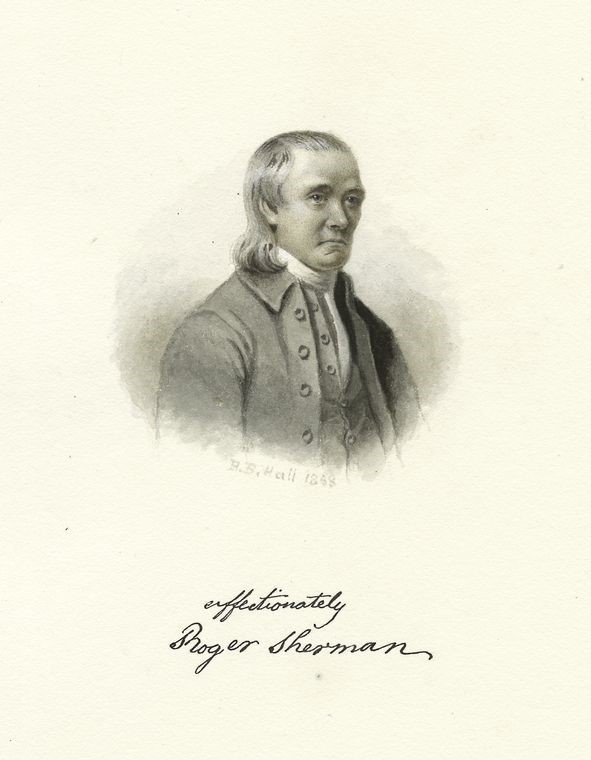Roger Sherman, a Connecticut politician and Superior Court judge, is best remembered as the architect of the Connecticut Compromise, which prevented a stalemate between states during the creation of the United States Constitution.
During the summer of 1787, delegates gathered in Philadelphia to draw up rules for a stronger central government that would help rule the new nation. When the Constitutional Convention became deadlocked over the matter of legislative voting, Sherman proposed a system similar to one he had advocated previously as a delegate to the Continental Congress in 1776. The compromise provided for a bicameral legislature, with representation in the House of Representatives according to population and in the Senate by equal numbers for each state. Sherman’s compromise was adopted on July 16, 1787 by a vote of five states to four, and served not only to save the crumbling convention, but provided stimulus to resolve other issues yet to be decided.
Following ratification of the Constitution, Sherman served first in the House of Representatives and then in the Senate. In addition in 1790, he and Richard Law updated and revised the existing Connecticut statutes. He died while still a Senator in 1793, and is buried in the Grove St Cemetery in New Haven, Connecticut.

History Note:
Roger Sherman is the only person to sign all four of the important American Revolutionary documents: the Articles of Association in 1774, the Declaration of Independence in 1776, the Articles of Confederation in 1781, and the Constitution of the United States in 1787.
For additional reading on the topic see: 61 Conn. Bar Journal 182.
